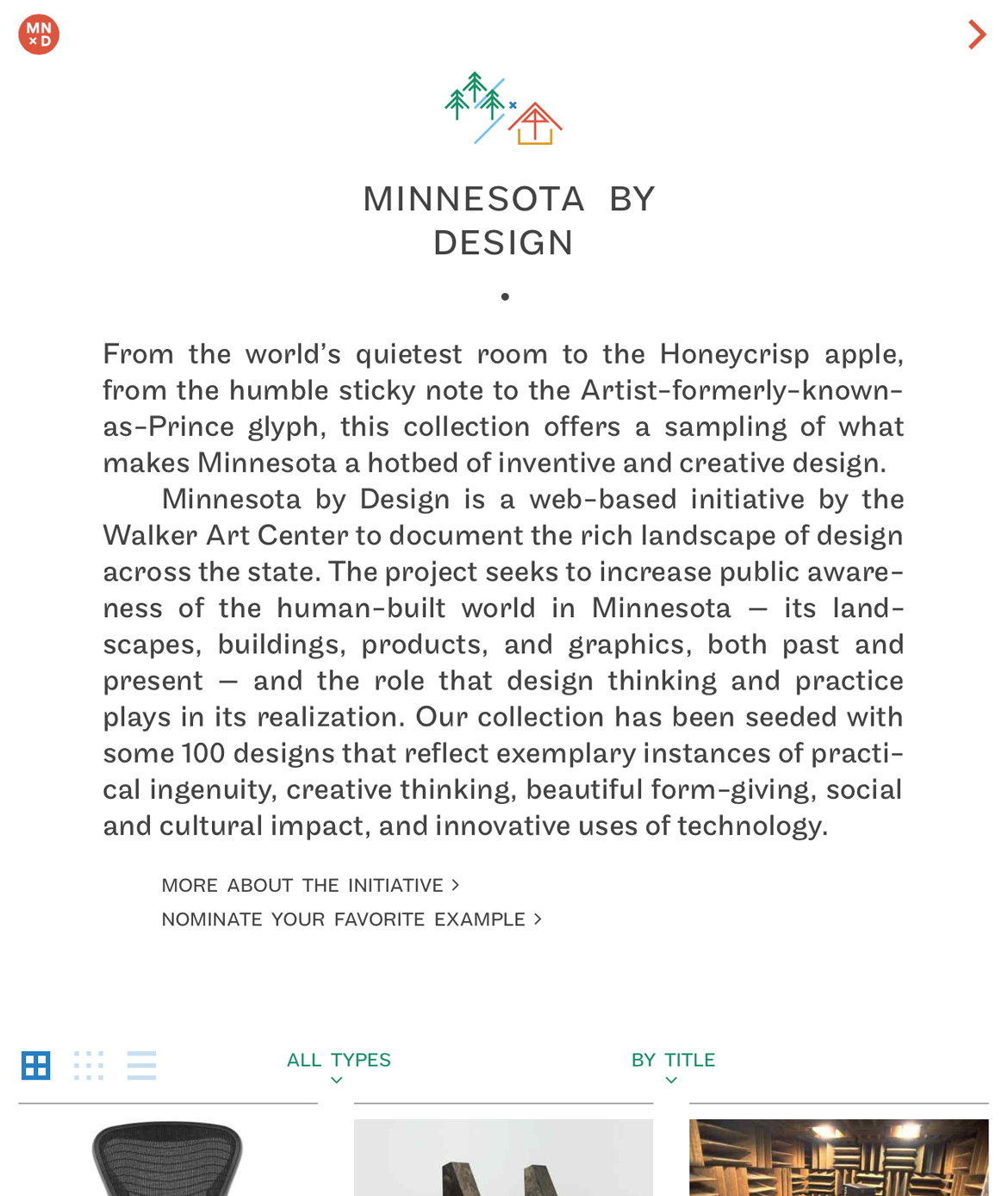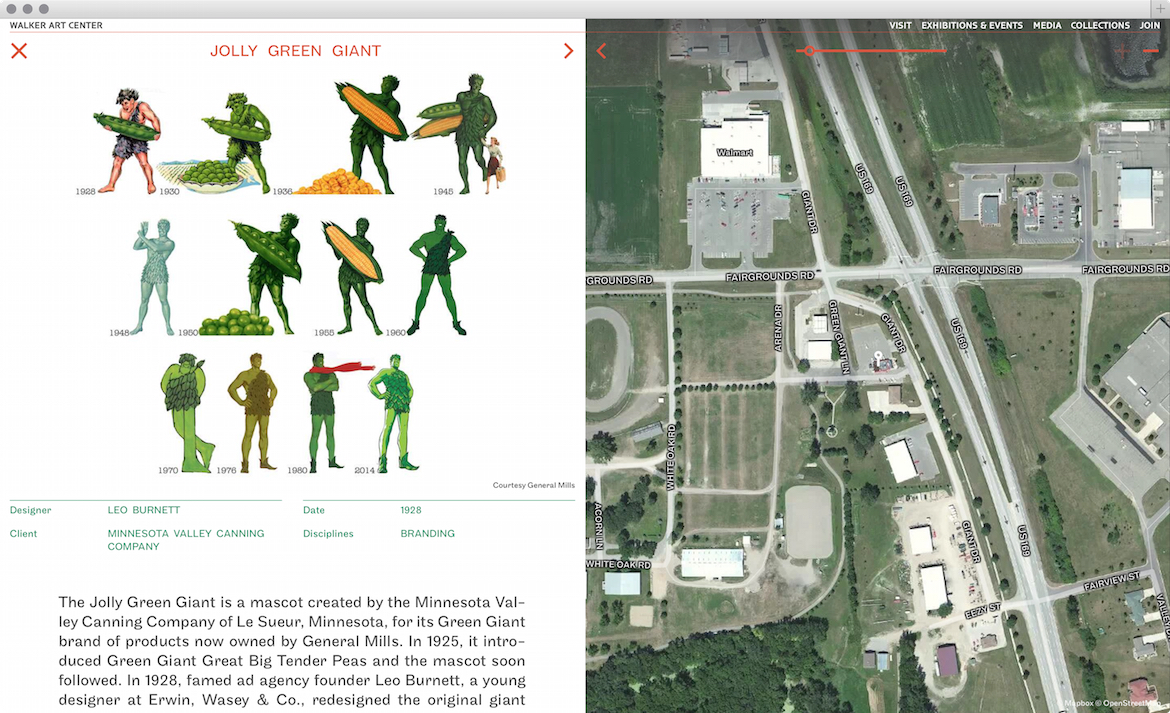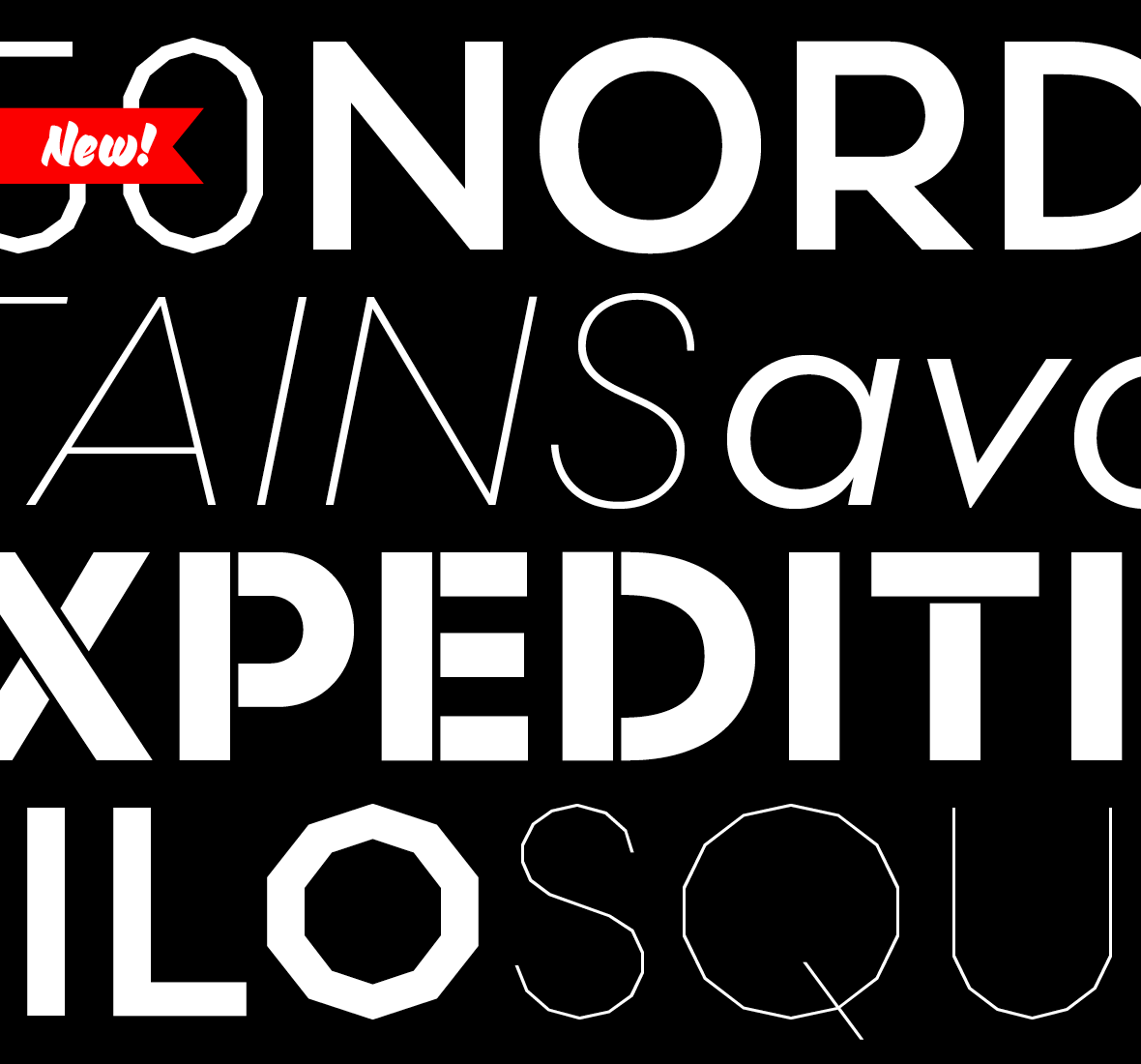13 Mar 2015
Minnesota by Design
The Nerf Ball. Masking tape. The Hüsker Dü logo. Cheerios and Wheaties. This is Minnesota design and we haven’t even mentioned the architecture. Or the chairs. Or the rollerblades (don’t roll your eyes). Or the magnetic poetry (don’t roll your eyes!).
Walker Art Center launched a web-based initiative called Minnesota by Design and as you can see, we can’t pick a favorite. That’s why it’s such an honor to have Klavika included in the collection. Eric, who designed Klavika in 2004, was born in Minnesota and we’re proud to uphold the culture that has been here long before us.

The virtual gallery allows the Walker to include works that can’t be practically collected – like a park. It also means webfonts. We were excited to see Maple chosen as the typeface for the project, used for everything from navigation to descriptions and even the map that represents the origins of the designs.
So if you’re interested in some design history – much of this work extends far beyond Minnesota – take a look yourself but beware the rabbit hole. Soon you’ll know plenty about the Honeycrisp apple. Tonka Toys. Paul Bunyan. Marcel Breuer…

